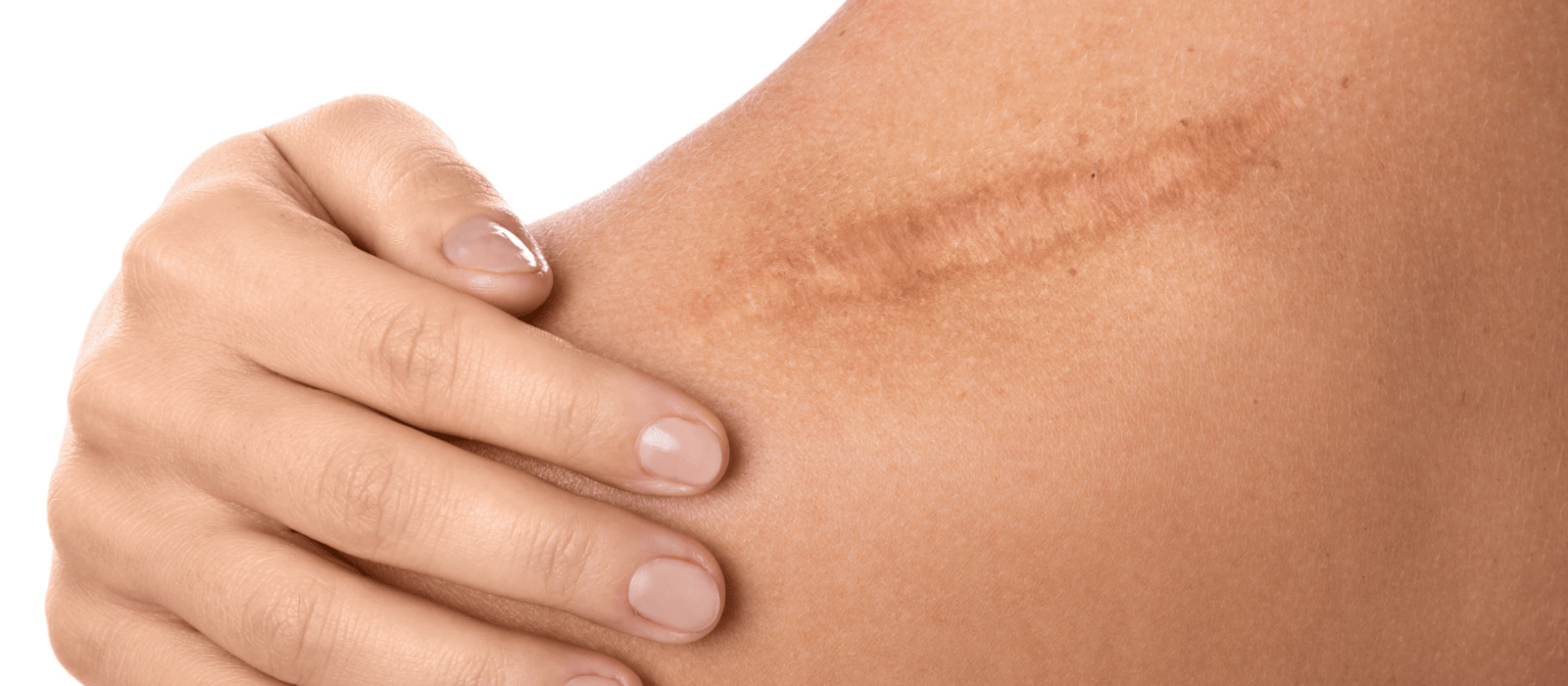What Are Scars?
Scars develop in response to an injury to the deepest layer of skin called the dermis. The wound creates permanent structural changes that alter the appearance of the epidermis, which is the name of the skin’s top layer. It is usually pink or pale brown and will be cover the previously damaged skin.
CAUSES
A scar is caused by the body producing collagen, a fibrous protein found in the skin, to repair the damage to the skin.
RISK FACTORS
Anyone who has a skin injury is at risk for developing a scar, but the likelihood of a scar forming is based on the severity of the skin injury as well as age and overall health of the body and the skin. A scar can also form if a skin wound is not properly cared for.
DIAGNOSIS
A scar will usually form under a scab. Side effects of scarring may include:
• Severe itching
• Tenderness
• Pain
• Sleep disturbances
• Anxiety and/or depression
• Disruption of daily activities
KELOID SCARS
You run the risk of developing thick and unsightly scars if you do not attend to the wound promptly and correctly. Doctors refer to these types of scars as keloids. Keloids appear quite differently than normal scars because they are thick, red, bumpy, and typically extend beyond the margins of the original wound. Prompt self-care or medical attention is critical in preventing keloids when you sustain a serious injury. However, genetic factors, the location of the wound, and what caused the wound all play a role as well.
Treatment & Prevention
The only way to prevent scars is to prevent skin injuries and properly care for any skin wounds that do occur. The way you care for your wound has a big impact on how much of a scar it will leave behind. We recommend the following steps:
- Clean and cover the wound as soon as the injury happens.
- Gently rub the wound with a warm washcloth and soap twice a day for the first several days to loosen and remove scabs.
- Keep the wound moist by applying petroleum jelly or antiseptic ointment.
- Remove bandages once all scar tissue has fallen off.
Regardless of a scar’s location or prominence, Anne Arundel Dermatology offers several options to minimize its appearance if it makes you feel uncomfortable. These include prescription crème, surgical revision, dermabrasion, chemical peels, cortisone injections, and laser treatment. The type of procedure will depend on the size and placement of the scar, as well as the overall health of the patient.
Visit Anne Arundel Dermatology Group
Our team provides thoughtful, expert care for all your skin health needs. We are proud to offer the most advanced general, surgical, and cosmetic dermatological services in the Mid-Atlantic and Southeastern regions.

